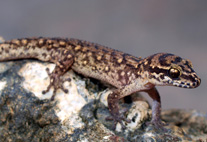Abstract
Tylencholaimellus persicus sp. n. is described and illustrated based on morphological and molecular characters. The new species is characterized by its 613–885 μm long body, expanded lip region separated from body contour by a sharp constriction, forming a large disk-like structure, odontostyle and odontophore respectively 12–14 and 6.5–8.0 μm long, female genital system mono-opisthodelphic with relatively long anterior uterine sac (AUS; 50–80 μm in length), position of vulva relative to the body length (V = 36.5–41.5), broadly rounded tail, abundant males in population with 22–25 μm long spicules and one ventromedian copulatory supplement. The new species is compared with five known species of the genus that have a perioral disc, rounded tail and AUS: T. coronatus, T. incertus, T. montanus, T. ozarkensis and T. projectus. Compared to these five species, the new species has an expanded lip region separated from body contour by a sharp constriction, but can further be separated by a combination of morphological and morphometric characters such as odontostyle length, tail shape, differences in ratios c´ and V and male characters. Because of having similar general morphology, the new species was also compared with a species of genus Margollus, M. bokanicus, and the differences between the two species are discussed. In addition to morphological and morphometric data, molecular phylogenetic analyses were performed using partial sequences of the 18S SSU and 28S LSU D2/D3 rDNA segments, in which the new species forms a clade with four species/isolates of Tylencholaimellus in the SSU tree and one isolate of Tylencholaimus in the LSU tree using Bayesian inference (BI).

